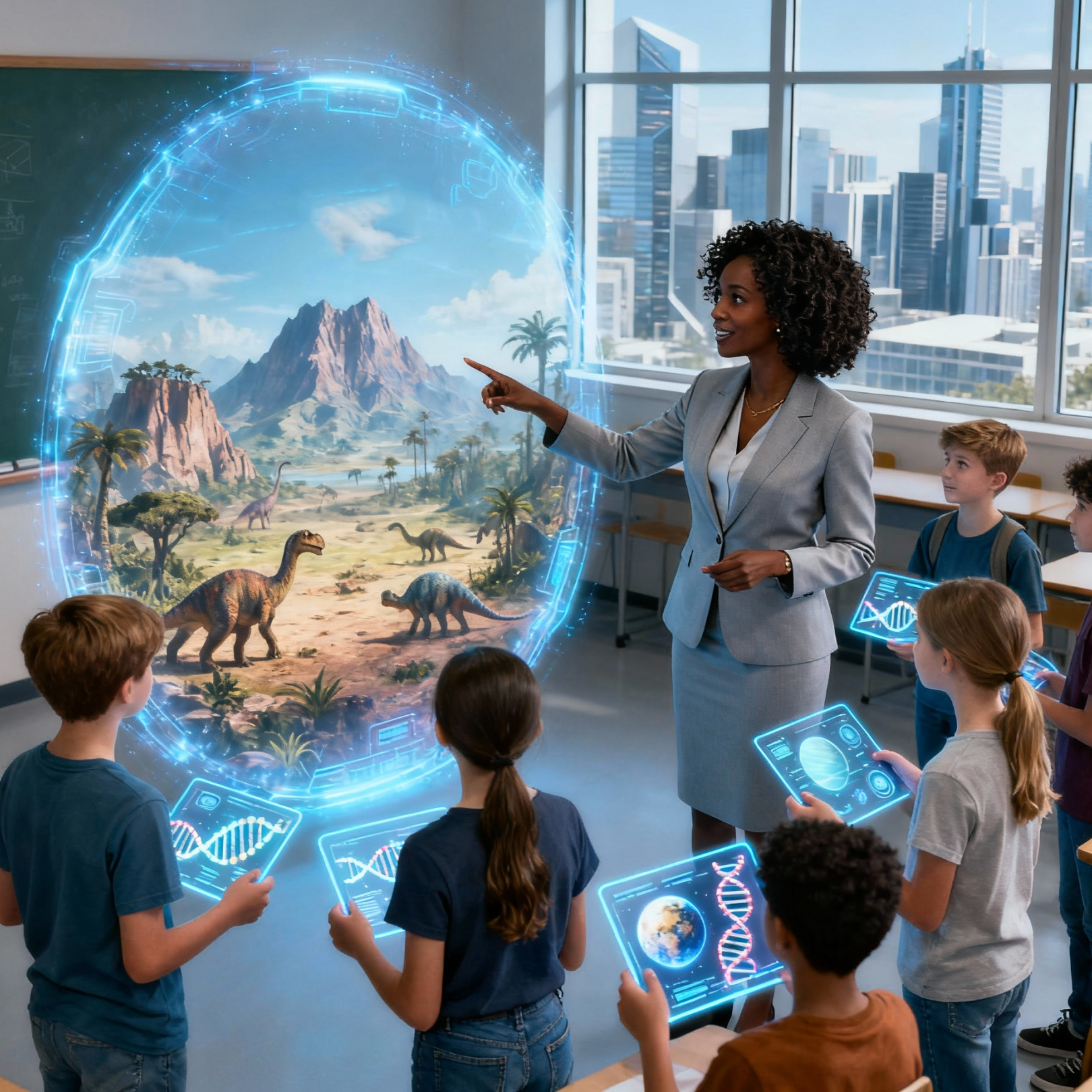3 min read
AI Should Lift Teacher Burden, Not Replace Teachers
Teachers across America are drowning. Larger class sizes, more students needing intervention, mounting compliance demands—the burden has become...
Motivention delivers 2x growth for Tier 3 students. Discover how Motivention orchestrates AI, personalization, mastery, and motivation to help Tier 3 students exit intervention—and stay out.

Studient™ redefines what’s possible in Tier 3. Through human-centered AI, motivation science, and mastery-first design, we help districts accelerate growth for students who are furthest behind—without overloading educators.

AI is all around us—but clarity isn’t. Studient™ cuts through the noise with a human-centered approach that honors educators, safeguards students, and delivers real results.

From implementation insights to school-level outcomes, our resource hub helps district leaders and educators go from questions to clarity—fast.

.png?width=2000&height=1250&name=Untitled%20design%20(15).png)
The education technology landscape is flooded with AI solutions, each promising to revolutionize learning. Yet beneath the marketing headlines lies a critical truth: not all AI delivers the same results for students who need help most.
Understanding the differences between AI types isn't just technical knowledge—it's essential for making decisions that impact student outcomes. For educators navigating this complex terrain, clarity about what works and what doesn't can mean the difference between genuine transformation and costly disappointment.
This guide breaks down the three main types of AI in education, explains why orchestration outperforms automation, and reveals how the right AI approach guarantees measurable growth for struggling learners.
Generative AI, or Large Language Models (LLMs), such as ChatGPT and similar tools excel at drafting quizzes, lesson plans, explanations, translations, and other instructional materials on demand. While this technology is impressive, it presents challenges for education, including risks of plagiarism, misinformation, hallucinations, and placing extra burden on teachers to verify accuracy. They're useful for planning, but not for driving intervention fidelity.
Key limitation: Generative AI creates content, but lacks pedagogical insight, often increasing educators’ workload rather than reducing it. More content ≠ better learning.
Adaptive learning systems adjust the difficulty of tasks based on students' answers, advancing when responses are correct and simplifying when they’re not. However, most systems push students forward at 70–80% accuracy, leaving learning gaps that can compound over time. True personalization means adjusting the learning journey on multiple levels to address student needs, not leveling and a one-size-fits-all path based on timing.
Key limitation: Adaptive learning offers surface-level "personalization," addressing symptoms rather than the root causes of learning challenges like motivation and engagement.
Agentic AI is marketed as a solution that autonomously decides learning paths, goals, and pacing for students. While this concept sounds futuristic, it raises serious concerns for schools:
Key limitation: Agentic AI undermines both the human relationships and the intrinsic motivation that are essential for meaningful learning.
Human-centered AI, the model championed by Studient, takes a fundamentally different approach by orchestrating personalized mastery pathways consistently reviewed and updated by academic experts. The AI monitors student engagement to orchestrate elements like personalization, mastery, motivation, and real-time feedback. This changes the role of educators from deliverers of content to developers of human potential. Instead of replacing educators, it works alongside them to enhance learning outcomes.
Key advantage: Human-centered AI delivers the benefits of personalized tutoring (Bloom’s “2 Sigma” effect) at scale, while preserving the trust and care that drive effective education.
The critical difference lies in purpose and scope. Automation replaces human tasks with technology. Orchestration amplifies human expertise through intelligent coordination.
Automated systems often digitize existing problems rather than solve them. They may speed up processes but fail to address underlying challenges like student disengagement, knowledge gaps, or lack of motivation. Automation can’t deliver Bloom’s 2 Sigma effect at scale. At best, it digitizes old problems; at worst, it masks them.
AI orchestration monitors multiple student signals simultaneously—learning progress, engagement levels, and support needs—then coordinates appropriate responses. This creates a learning environment that adapts not just to what students know, but to how they learn best.
For example, when a student shows signs of frustration, orchestration might adjust the lesson pace, provide additional scaffolding, or trigger motivational elements. When mastery is demonstrated, it ensures truly solid understanding before advancement.
Bloom showed that one-on-one tutoring could transform outcomes. Orchestration delivers those same conditions—personalization, feedback, and mastery—but at district scale.
AI orchestration analyzes thousands of data points to create learning paths as unique as each student. Rather than one-size-fits-all approaches, every lesson is tailored to address specific gaps while building on existing strengths.
The most sophisticated AI orchestration systems integrate motivation science directly into the learning experience. Students receive immediate recognition for progress, participate in meaningful challenges, and connect their learning to personal interests and goals.
Unlike traditional systems that accept 70% as "good enough," AI orchestration enforces true mastery—typically 90% or higher—before students advance. This ensures solid foundations and prevents the accumulation of learning gaps. Districts implementing this approach consistently see 2X expected growth, with some Tier 3 students making multiple grade-level gains within a single school year.
Yes, when properly implemented. Quality AI orchestration systems operate within strict privacy frameworks and provide transparent reporting to educators about all data usage and student progress.
AI orchestration handles the complex logistics of personalized learning—tracking progress, adjusting difficulty, coordinating resources—while teachers focus on building relationships, providing encouragement, and addressing individual student needs that require human insight.
Districts implementing comprehensive AI orchestration for Tier 3 intervention typically see 2X expected annual growth rates, with some students gaining multiple grade levels in a single academic year.
The future of education isn't about replacing human expertise with artificial intelligence—it's about amplifying that expertise through intelligent orchestration. The districts leading tomorrow's transformation understand this fundamental difference.
When evaluating AI solutions, look beyond the marketing claims. Ask whether the system generates content without pedagogical review, whether it enforces true mastery standards, and whether it addresses motivation alongside academics.
Most importantly, demand proof. The right AI orchestration system doesn't just promise better outcomes—it guarantees them through verified results and outcome-based partnerships.
AI alone doesn’t guarantee transformation. Human-centered AI orchestration does. Districts that choose human-centered AI aren’t just keeping up with change—they’re defining the future of education. Start your journey with a Studient discovery call.
Continue exploring AI in education with these carefully curated articles even more innovative applications that will reshape how we teach and learn in the digital age.

3 min read
Teachers across America are drowning. Larger class sizes, more students needing intervention, mounting compliance demands—the burden has become...
.png)
2 min read
The data tells a compelling story: AI adoption in K–12 education has reached a tipping point. Over 50% of middle and high school students use AI...

3 min read
In 1984, educational psychologist Benjamin Bloom uncovered something extraordinary. Students who received one-on-one tutoring achieved two standard...